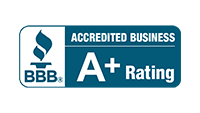
In the current job market, finding the right talent is becoming increasingly challenging for companies of all sizes. With low unemployment rates and a highly competitive job market, recruiters are constantly searching for new and effective ways to attract top talent. One of the most effective methods companies can use to attract and hire talented individuals is employee referrals.
Employee referrals are becoming an increasingly popular method of recruitment. They are a cost-effective and reliable way to find quality candidates already familiar with the company culture and values. In fact, according to a study by Jobvite, referrals are five times more effective than all other hiring sources. In this blog post, we will explore the power of employee referrals in recruitment and how companies can use this method to attract and hire the best talent.
Why Employee Referrals Work
Employee referrals work because they rely on the connections and relationships that employees already have within their networks. Employees are more likely to refer individuals who they know will fit in well with the company culture and have the necessary skills and experience to succeed. Referrals also lead to faster hiring, lower recruiting costs, and higher employee retention rates.
In addition to these benefits, employee referrals also help to create a positive company culture. Employees who feel valued and appreciated are likelier to be engaged and productive in their work. Referral programs can foster a sense of community within the workplace and create a culture of trust and collaboration.
Implementing an Employee Referral Program
Implementing an employee referral program is relatively straightforward. Here are the steps to follow:
Define the Program Goals and Objectives
Before launching an employee referral program, defining the goals and objectives is important. What is the purpose of the program? Is it to attract new talent, improve employee retention rates, or increase employee engagement? Understanding the program’s goals and objectives will help determine the program’s structure and incentives.
Develop the Program Structure and Incentives
The structure and incentives of the program will depend on the goals and objectives. Some companies offer monetary rewards for successful referrals, while others offer non-monetary incentives such as extra vacation days or company swag. The program structure should be easy to understand and effectively communicate the incentives for successful referrals.
Communicate the Program to Employees
Once the program structure and incentives are defined, it is time to communicate the program to employees. Plan to tell employees about the program through company-wide emails, intranet communications, or informational sessions. It is important to explain the program’s benefits and how it can help employees and the company.
Track and Measure the Program
You should track and measure the program’s results to ensure its success. Do this by monitoring the number of referrals received, the number of referrals that result in hires, and the retention rates of referred employees. Use this data to refine the program and improve it over time.
Tips for Successful Employee Referrals
Make it Easy to Refer Candidates
Employees are likelier to refer candidates if the process is easy. This means providing employees with clear instructions on referring candidates and ensuring the referral process is user-friendly.
Offer Attractive Incentives
It is important to offer attractive incentives to motivate employees to participate in the program. This can include monetary rewards, extra vacation days, or company swag. The incentives should be meaningful and tailored to the employees’ interests and preferences.
Promote the Program Consistently
Consistently promoting the program will ensure its success. A good way to encourage participation is by highlighting successful referrals and their impact on the company. Keeping the program top of mind for employees will motivate them to want to participate.
Diversify Employee Referrals
While employee referrals are effective, they can also lead to a need for more diversity in the candidate pool. Companies should encourage employees to refer individuals from diverse backgrounds and skill sets to avoid this issue. Train employees on unconscious bias and actively seek out referrals from underrepresented groups.
Follow Up with Employees
When an employee refers a candidate, follow up with them promptly and thank them for participating in the referral program. Openly communicating with referring employees through the hiring process helps to keep them engaged and motivated to continue referring candidates in the future.
Conclusion
In today’s highly competitive job market, companies are constantly searching for new and effective ways to attract and hire top talent. Employee referrals are a cost-effective and reliable recruitment method that can help reduce hiring costs, improve retention rates, and create a positive company culture. By implementing an employee referral program and following best practices for success, companies can tap into the power of employee referrals and find the best talent for their organization.





